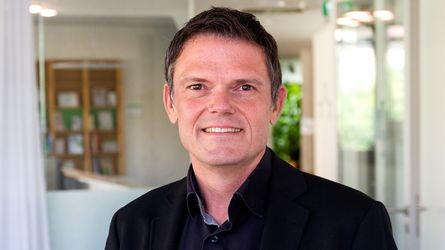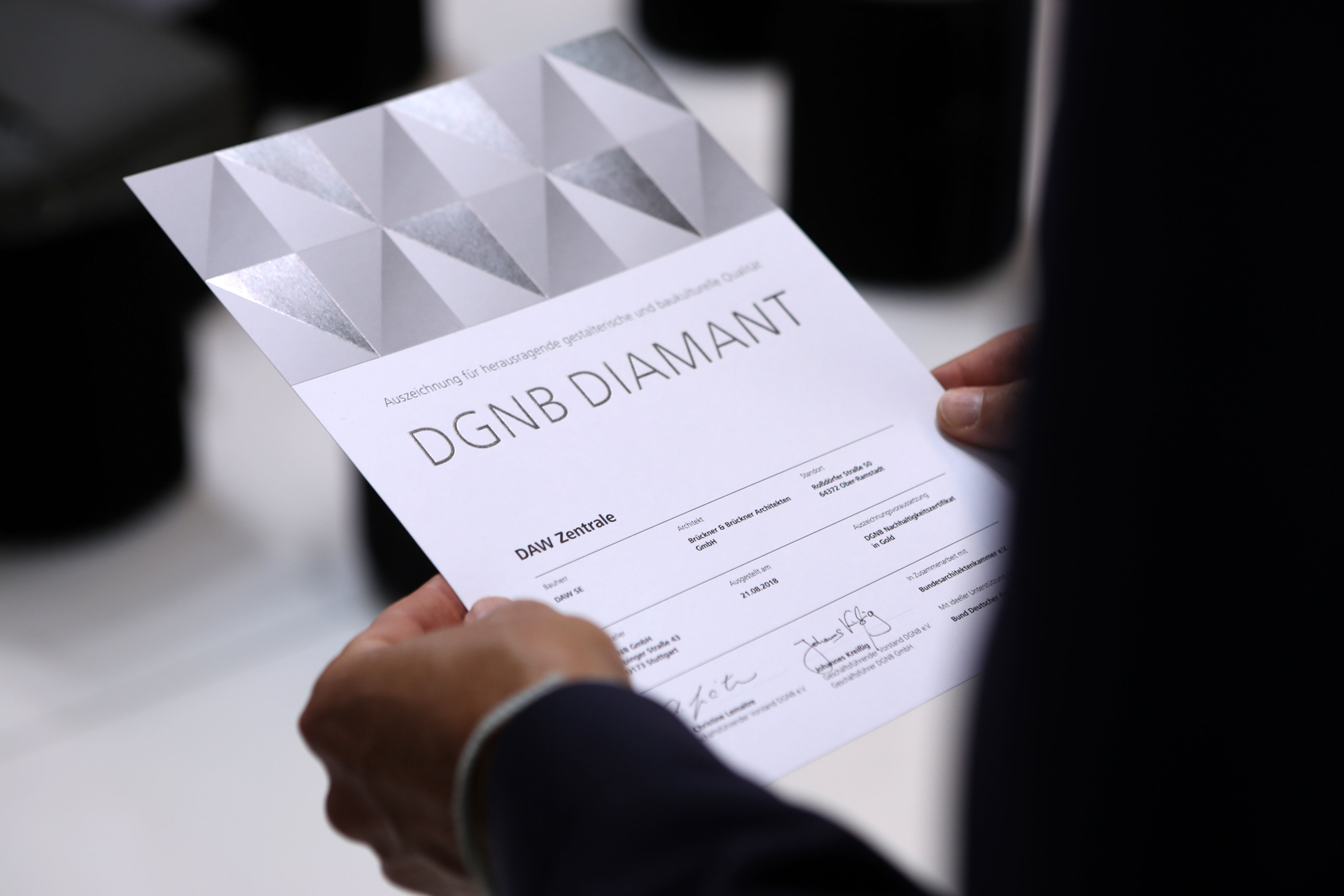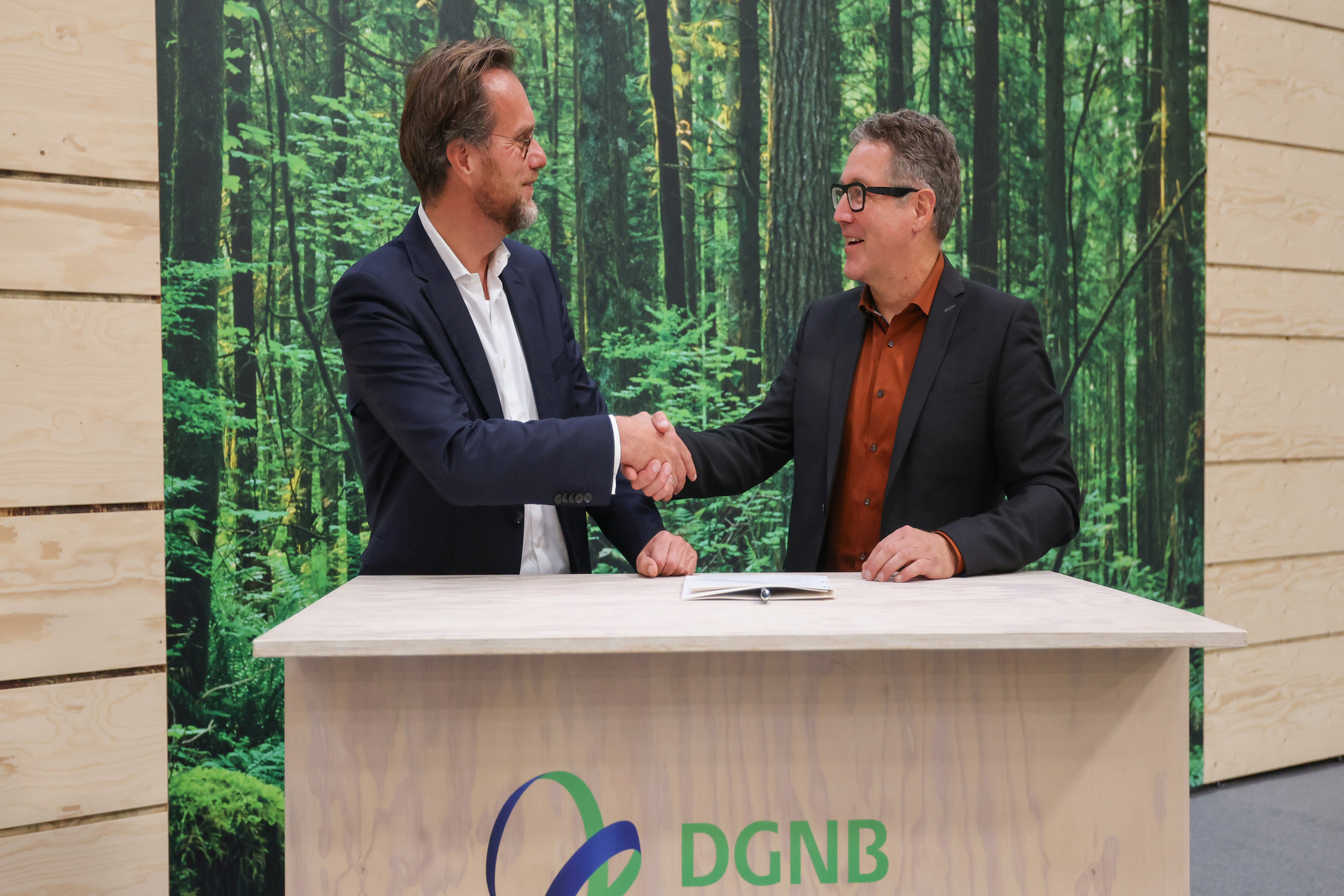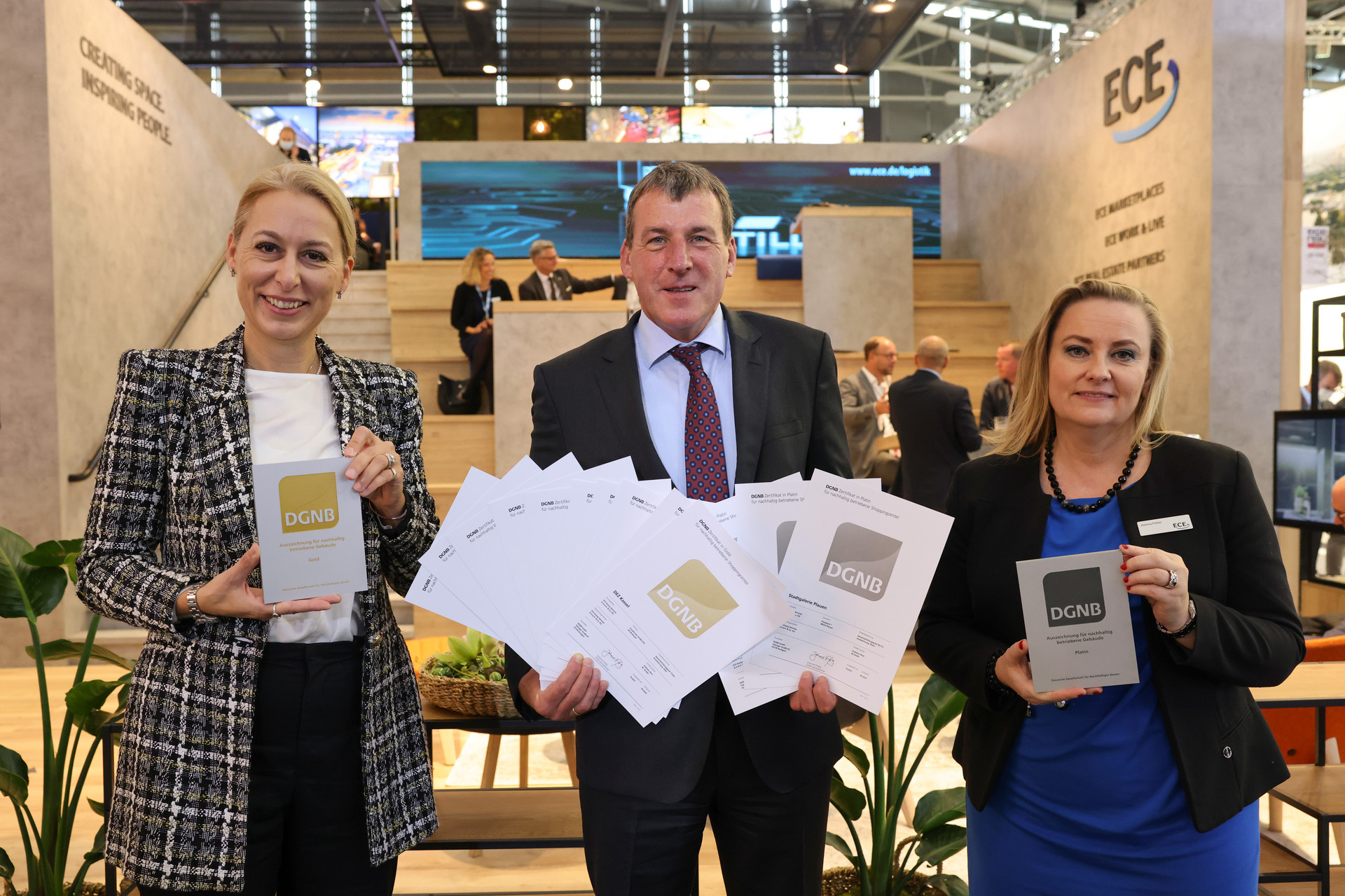Implementing sustainability fully from the very beginning of a building project, i.e. right from the start of planning, is a major advantage of DGNB Certification. Especially for new buildings, this can be confirmed by a DGNB Pre-Certificate. This gives all those involved in the construction process the certainty, already in the early planning phase, of which sustainability goals of a building are to be achieved with its completion, and conveys a common understanding of the associated requirements. On such a basis, risks can be minimised during the construction of the building, in its subsequent operation and during conversion and deconstruction.
In a DGNB Certification for New Construction of Buildings, properties are considered up to three years after completion.
Current system versions 2018 and 2023
In April 2023, the DGNB published its comprehensively revised certification system for new buildings. It is a consistent further development of the 2018 version and focuses even more strongly on issues such as climate action, adaptation to climate change and the conservation of natural resources and ecosystems to safeguard our livelihoods. It has also been made more user-friendly by streamlining the number of criteria. Links to other rating systems, such as the EU Taxonomy or the quality seal Qualitätssiegel Nachhaltiges Gebäude (QNG), have also been taken into account. Please note: As the accreditation process for the 2023 version is still ongoing, the registration deadline for newly constructed projects aiming for the QNG seal in the 2018 version has been postponed. A specific date cannot be given. However, the DGNB will publish a notice on its website four weeks before the end of the postponed deadline.
The 2023 version is currently available in German and English.
Since 1 December 2023, registration is only possible for the 2023 version. Exceptions are newly constructed projects aiming for the QNG seal.
Do you have a new construction project for international certification? In this case, the DGNB System for New Construction of Buildings, Version 2020 International applies.
Certify projects internationally
- Assembly buildings
To the scheme
- Car parks
To the scheme
- Consumer markets
To the scheme
- Department stores
To the scheme
- DGNB Flex
More about DGNB Flex
- Educational buildings
To the scheme
- Healthcare buildings
To the scheme
- Hotels
To the scheme
- Laboratory buildings
To the scheme
- Logistics buildings
To the scheme
- Mixed use
To the scheme
- Offices and administrative buildings
To the scheme
- Production buildings
To the scheme
- Residential buildings
To the scheme for small residential buildings (6 or less residential units)
To the scheme for residential buildings (more than 6 residential units)
- Shopping centres
To the scheme
- Sports halls
To the scheme
- Stations
To the scheme
Certification criteria
The DGNB system does not evaluate individual measures, constructions or components, but the overall performance of a building based on criteria. If these criteria are met in an outstanding manner, the building receives a certificate or pre-certificate in Platinum, Gold or Silver.
The DGNB System for New Construction of Buildings in the 2018 version comprises a total of 37 criteria from the six thematic fields of environmental, economic, sociocultural, technical, process and site quality. In the 2023 version, the system comprises 29 criteria. It should be noted that not every criterion is relevant for every schmeme. Depending on the scheme, the weighting of the individual criteria may vary. The DGNB provides the complete criteria set online free of charge.
An DGNB Auditor is required for registration for certification and the accompanying process. On our overview page you will find all the DGNB certification experts that you can request for your project. You can find already certified projects here.
Criteria of Version 2018
The six criteria of environmental quality allow an assessment to be made with regard to the effects of buildings on the global and local environment as well as the impact on resources and the generation of waste.
- Building life cycle assessment (ENV1.1)
- Local environmental impact (ENV1.2)
- Sustainable resource extraction (ENV1.3)
- Potable water demand and waste water volume (ENV2.2)
- Land use (ENV2.3)
- Biodiversity at the site (ENV2.4)
The eight criteria of sociocultural and functional quality help to assess buildings with regard to health, comfort and user satisfaction as well as the essential aspects of functionality.
- Thermal comfort (SOC1.1)
- Indoor air quality (SOC1.2)
- Acoustic comfort (SOC1.3)
- Visual comfort (SOC1.4)
- User control (SOC1.5)
- Quality of indoor and outdoor spaces (SOC1.6)
- Safety and security (SOC1.7)
- Design for all (SOC2.1)
The seven criteria of technical quality provide a scale for evaluating the technical quality in view of relevant sustainability aspects.
- Sound insulation (TEC1.2)
- Quality of the building envelope (TEC1.3)
- Use and integration of building technology (TEC1.4)
- Ease of cleaning building components (TEC1.5)
- Ease of recovery and recycling (TEC1.6)
- Immissions control (TEC1.7)
- Mobility infrastructure (TEC3.1)
The nine criteria of process quality aim to increase the planning quality and the construction quality assurance.
- Comprehensive project brief (PRO1.1)
- Sustainability aspects in tender phase (PRO1.4)
- Documentation for sustainable management (PRO1.5)
- Procedure for urban and design planning (PRO1.6)
- Construction site / construction process (PRO2.1)
- Quality assurance of the construction (PRO2.2)
- Systematic commissioning (PRO2.3)
- User communication (PRO2.4)
- FM-compliant planning (PRO2.5)
Certification requirements
At the time of certification, the building should not have been completed or commissioned more than three years ago. If it is intended to certify a new building that was completed or commissioned more than three years ago, this must be agreed with the DGNB Office via a project-specific request for certifiability (PCQ) by a DGNB Auditor before the project is registered. As a rule, it is always possible to certify a building according to the current system.
Version 2018
In general, the following DGNB minimum requirements apply:
- Indoor air quality (minimum requirements in accordance with SOC1.2 criterion)
- Design for all (minimum requirements in accordance with SOC2.1 criterion)
- Statutory requirements: The statutory requirements that apply to the building to be certified must be fulfilled.
Where individual regulations with regard to minimum requirements exist, these are listed in this document in the section titled "Scheme-specific information".
Version 2023
In the further development of the certification system, the principle of minimum requirements is applied even more strongly to all those topics that are non-negotiable for a sustainably planned and built property in terms of its future viability. Some minimum requirements are mandatory in order to be certified at all. Others are required to achieve a DGNB Certification in Platinum, the highest level awarded.
Minimum requirements by criteria for all buildings:
- ENV1.1: Disclosure of life cycle assessments and, for buildings not yet designed for net greenhouse gas neutral operation at the time of completion, a "Climate Action Roadmap for Climate Neutral Operation - Target Year According to National Targets".
- ENV1.3: It must be demonstrated that at least 50 percent (by mass) of the permanently installed wood or wood-based materials used is sourced from certified sustainably managed sources.
- ECO2.6: For all buildings, there is a "basic resilience" to climate risks.
- SOC1.2: The indoor air quality measurement meets the minimum requirements for the assessment of indoor air concentration of volatile organic compounds.
- SOC2.1: Accessibility: Compliance with quality level QS1. This must be complied with for all uses (main, secondary and subordinate uses). Exceptions can be found in Table 2 in the criterion.
- TEC1.6: It must be demonstrated that circular aspects are taken into account in planning and implementation. For this reason, as a minimum requirement for certifiability, a deconstruction manual must be submitted or the minimum score of 20 points in the entire criterion must be demonstrated.
- PRO2.3: Development of an energy monitoring concept.
- SITE1.1: A climate risk analysis is available.
Minimum requirements for buildings seeking DGNB Platinum Certification:
- ENV1.1: Disclosure of life cycle assessments and, for buildings that are not yet designed for net greenhouse gas neutral operation at the time of completion, an "Ambitious Climate Action Roadmap" for climate neutral operation.
- ENV1.2: Compliance with quality level QS3.
- ENV2.2: For a Platinum certificate, 40 points must be achieved in the criterion.
- ENV2.4: For indicator 2 "Habitat" a minimum of 25 points is required.
- ECO2.6: Significant measures to reduce all risks classified as high at the site are being implemented.
- SOC1.2: In mechanically ventilated buildings, the measurement and assessment of indoor air quality results in a TVOC indoor air quality value of less than 1000 μg/m³ and a formaldehyde value of less than 60 μg/m³.
- TEC1.4: Energy generation at the building: For the Platinum award level, a score of 5 points must be achieved in indicator 5.2.1.
- TEC1.6: For the DGNB Platinum Certificate, if deconstruction has taken place, a justification for the deconstruction must be provided and (also applies to projects without prior deconstruction) the minimum score of 40 points in the overall criterion must be demonstrated.
- TEC3.1: A minimum score of 40 points must be demonstrated in the entire criterion.
- PRO2.3: Commissioning of the regulation monitoring is available.
- SITE1.1: A qualified climate risk analysis is available.
If individual regulations exist for individual schemes with regard to the minimum requirements, these are listed in the criteria catalogue under the section "scheme-specific information".
Expert reports, analyses and simulations must make reference to the current planning status or the building as it was actually constructed. If expert reports and simulations made reference to a previous planning status, evidence must be provided to clearly demonstrate that they continue to be valid and relevant.
The scheme with the largest area share of the total DGNB assessment area is referred to as the primary use. If the area share of the secondary use is ≥ 15 percent of the DGNB assessment area, it must be assessed with the corresponding scheme in accordance with the application rules for mixed use buildings.
Certification is possible as a single certification, ensemble certification and multiple or serial certification. Unless otherwise stated in the individual criteria, only the building and the open spaces directly associated with it are considered.
Standard case: One certificate for the entire building

Certification is possible as a single certification, ensemble certification and multiple or serial certification. Here you will find the demarcation rules for the classification of project certifiability. Unless otherwise stated in the individual criteria, only the building and the open spaces directly associated with it are considered.
If a different certification is intended, this must be agreed with the DGNB Office via a project-specific request (PAZ) in the DGNB System Software by a DGNB Auditor before the project is registered.
More than one certificate

Buildings are to be certified separately if the building structures are clearly separated from each other. The underground car park is to be allocated to the building structures in accordance with the parking space certificate.
If a different certification is intended, this must be agreed with the DGNB Office via a project-specific request (PAZ) in the DGNB System Software by a DGNB Auditor before the project is registered.
Several buildings on one plot

Ensemble certification is possible for buildings on a site that are largely identical in construction. This must be agreed with the DGNB Office via a project-specific request (PAZ) in the DGNB System Software by a DGNB Auditor before the project is registered.
Identical buildings at different locations

This form of certification is used for structures such as consumer markets or prefabricated houses that are built identically at different locations.
Specific applications
Within the scope of certification for new construction, there are further award and application options that address potential special features in construction projects. These specific applications include:
Project registration
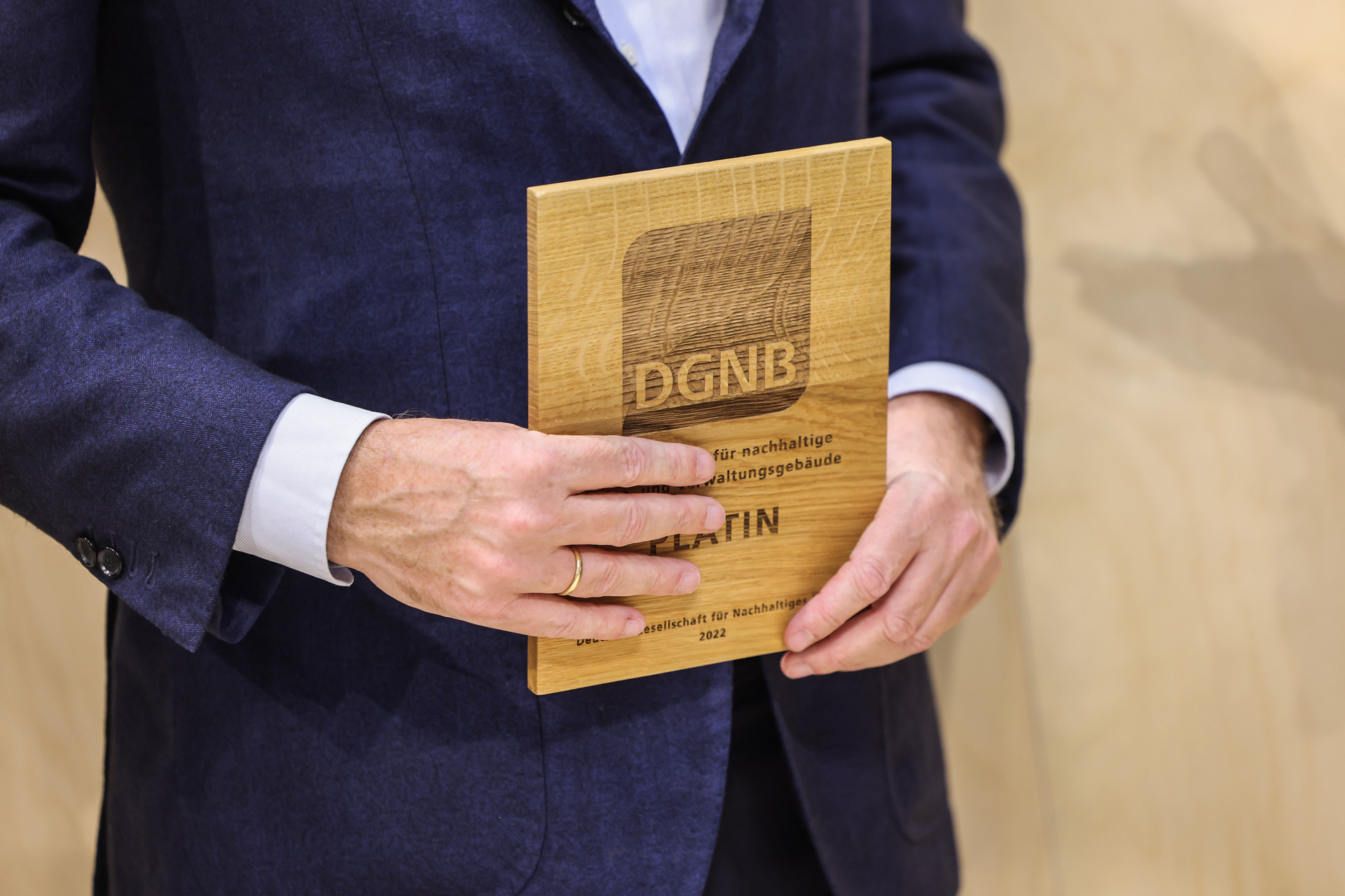
To register a project, clients must first hire a DGNB Auditor. This auditor can then register the project. Auditors also accompany the entire process and take over the verification and submission to the DGNB. They are active worldwide and specialise in certain schemes.
Projects can be registered in version "New Construction of Buildings, Version 2018" until 30 November 2023 and in version "New Construction of Buildings, Version 2023".
Selected DGNB certified projects
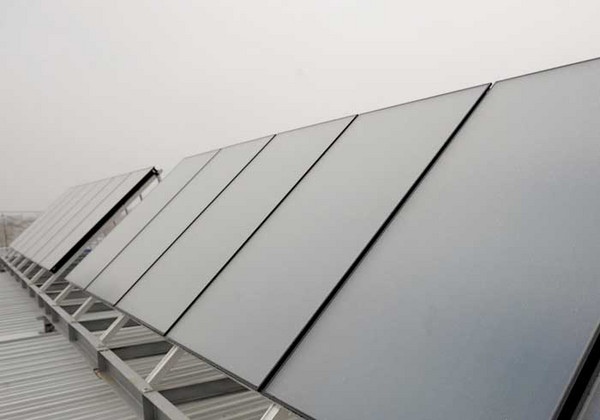
Shopping Centres
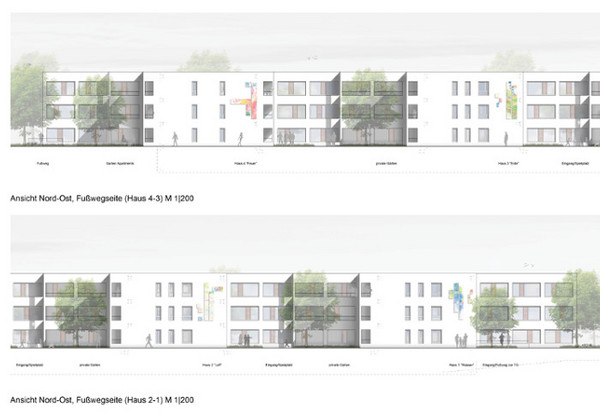
Residential Buildings
Your contact
